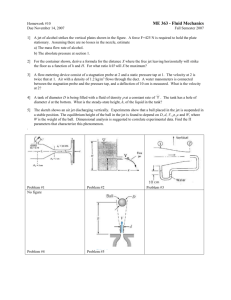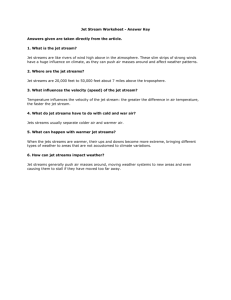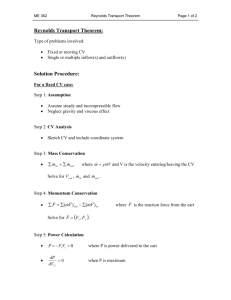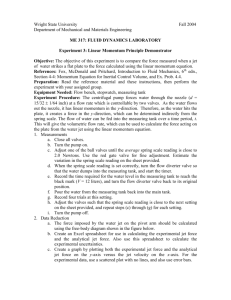Apparatus: Armfield Hydraulic Bench and Hydrodynamic Force
advertisement
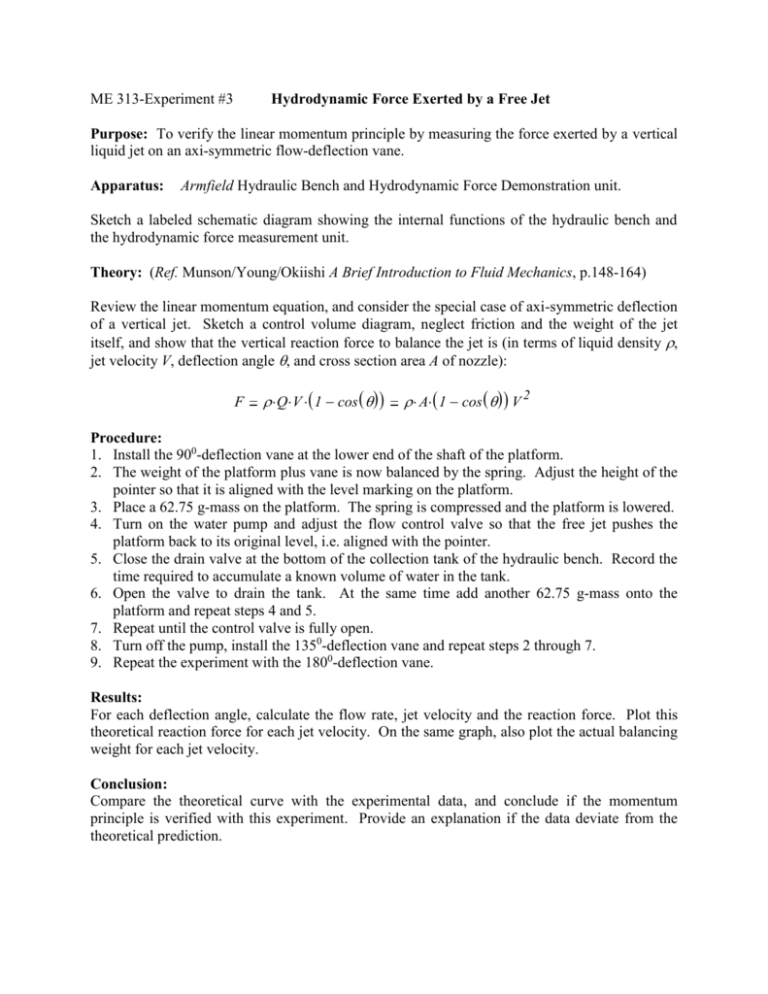
ME 313-Experiment #3 Hydrodynamic Force Exerted by a Free Jet Purpose: To verify the linear momentum principle by measuring the force exerted by a vertical liquid jet on an axi-symmetric flow-deflection vane. Apparatus: Armfield Hydraulic Bench and Hydrodynamic Force Demonstration unit. Sketch a labeled schematic diagram showing the internal functions of the hydraulic bench and the hydrodynamic force measurement unit. Theory: (Ref. Munson/Young/Okiishi A Brief Introduction to Fluid Mechanics, p.148-164) Review the linear momentum equation, and consider the special case of axi-symmetric deflection of a vertical jet. Sketch a control volume diagram, neglect friction and the weight of the jet itself, and show that the vertical reaction force to balance the jet is (in terms of liquid density , jet velocity V, deflection angle , and cross section area A of nozzle): F Q V 1 cos A 1 cos V 2 Procedure: 1. Install the 900-deflection vane at the lower end of the shaft of the platform. 2. The weight of the platform plus vane is now balanced by the spring. Adjust the height of the pointer so that it is aligned with the level marking on the platform. 3. Place a 62.75 g-mass on the platform. The spring is compressed and the platform is lowered. 4. Turn on the water pump and adjust the flow control valve so that the free jet pushes the platform back to its original level, i.e. aligned with the pointer. 5. Close the drain valve at the bottom of the collection tank of the hydraulic bench. Record the time required to accumulate a known volume of water in the tank. 6. Open the valve to drain the tank. At the same time add another 62.75 g-mass onto the platform and repeat steps 4 and 5. 7. Repeat until the control valve is fully open. 8. Turn off the pump, install the 1350-deflection vane and repeat steps 2 through 7. 9. Repeat the experiment with the 1800-deflection vane. Results: For each deflection angle, calculate the flow rate, jet velocity and the reaction force. Plot this theoretical reaction force for each jet velocity. On the same graph, also plot the actual balancing weight for each jet velocity. Conclusion: Compare the theoretical curve with the experimental data, and conclude if the momentum principle is verified with this experiment. Provide an explanation if the data deviate from the theoretical prediction. Date: _____________ Name __________________ ME313-Expt 3 Data Hydrodynamic Force Exerted by a Free Jet Water density, = 998 kg/m3. Diameter of nozzle, D = 0.8 cm. Deflection Angle: Balancing Mass (g) = 900 Volume (l) collected Time to collect (s) = 1350 Volume (l) collected Time to collect (s) = 1800 Volume (l) collected Time to collect (s)




